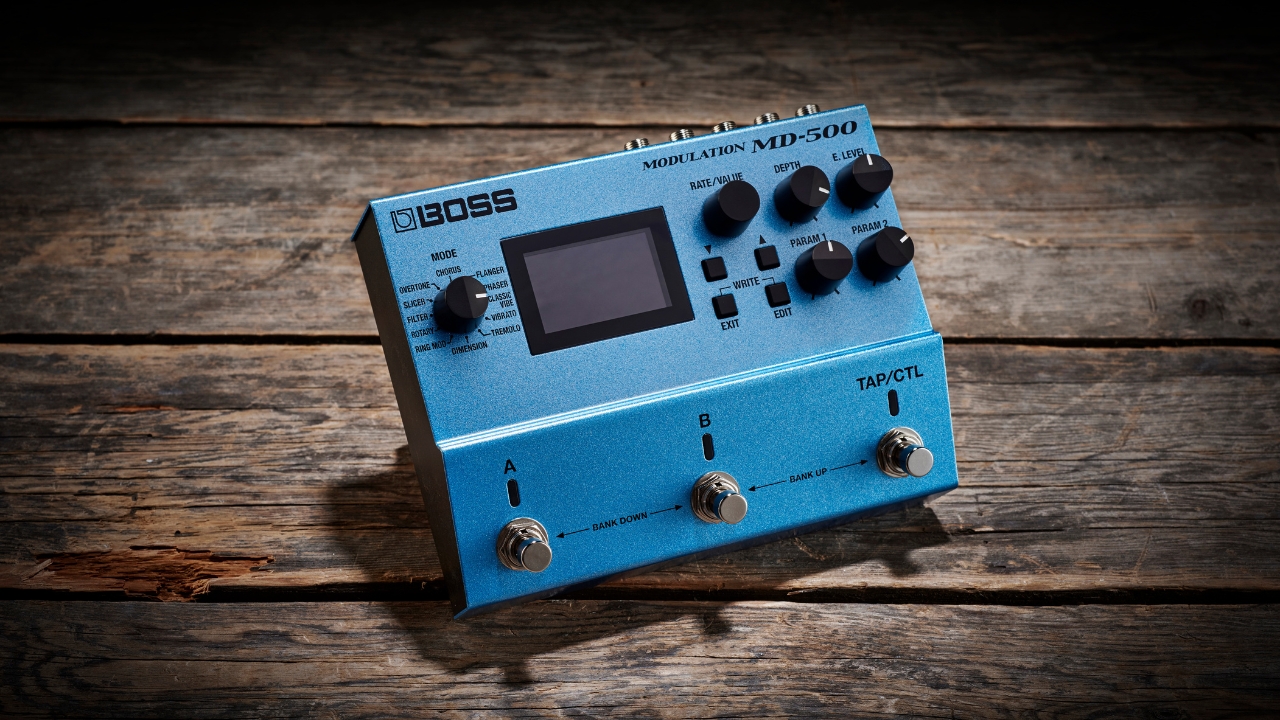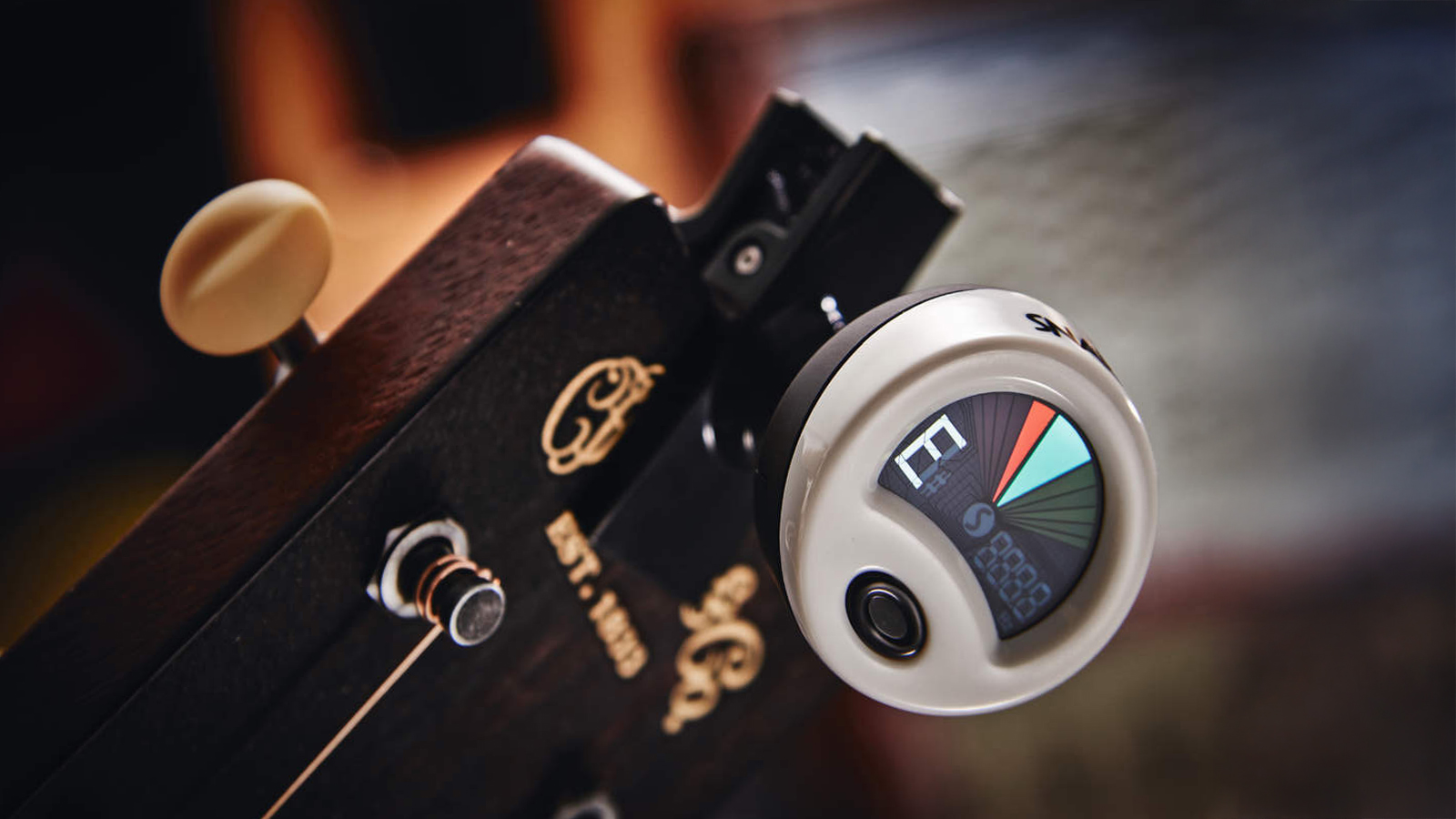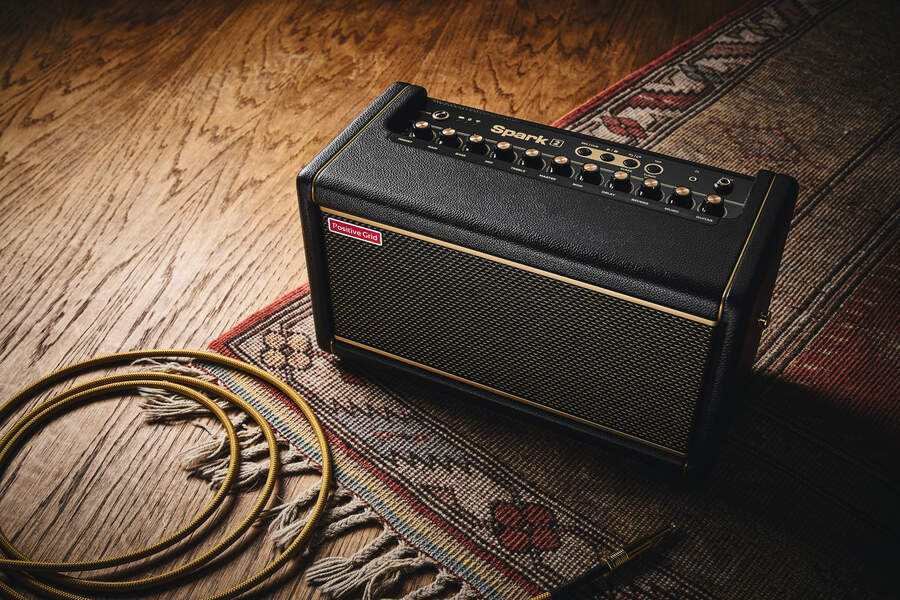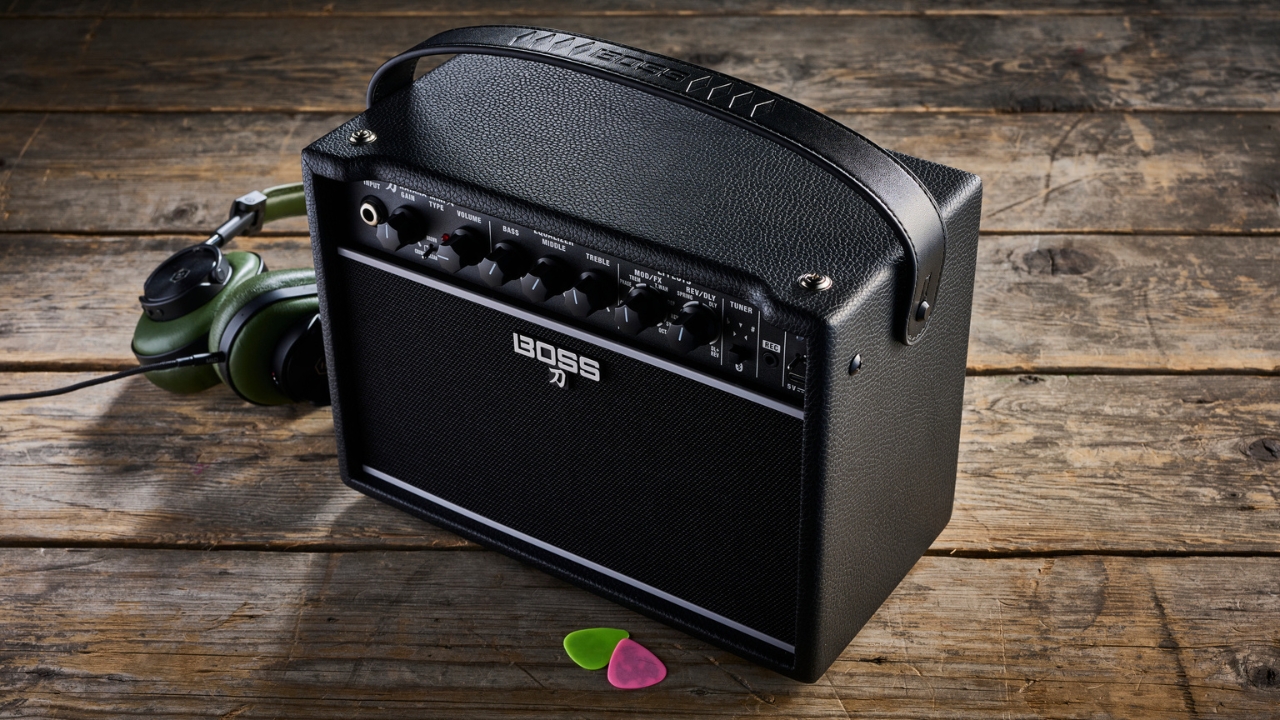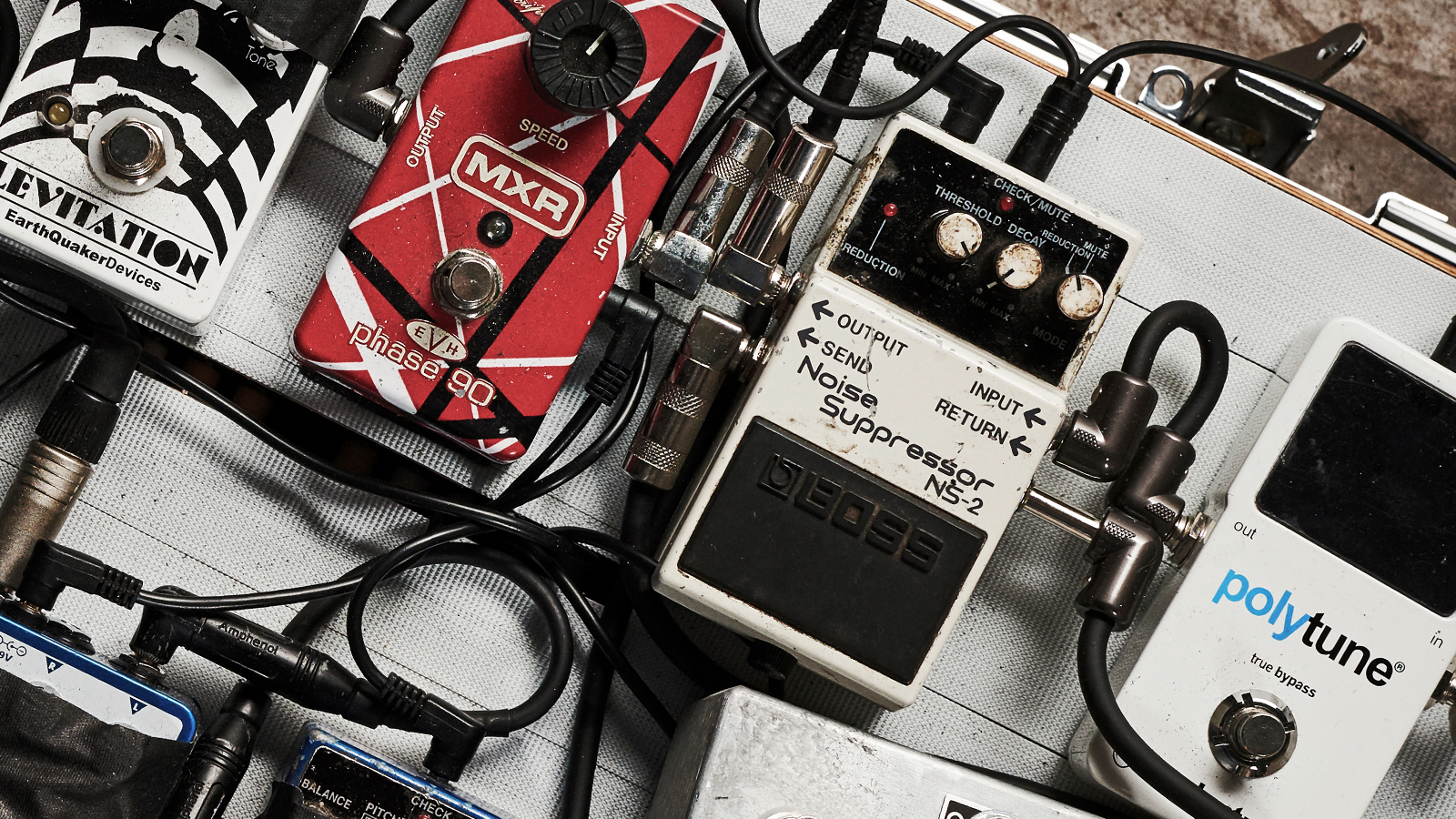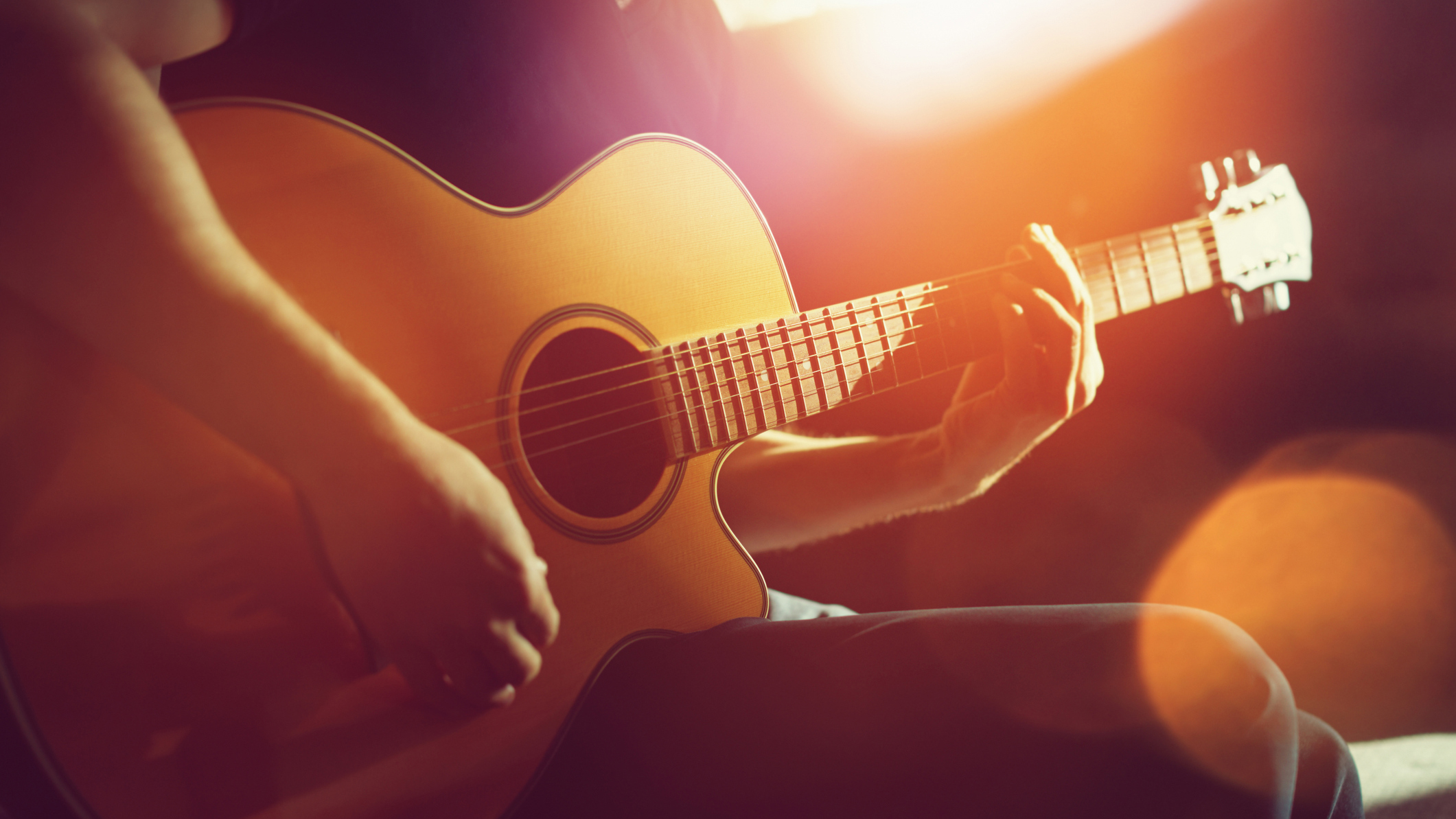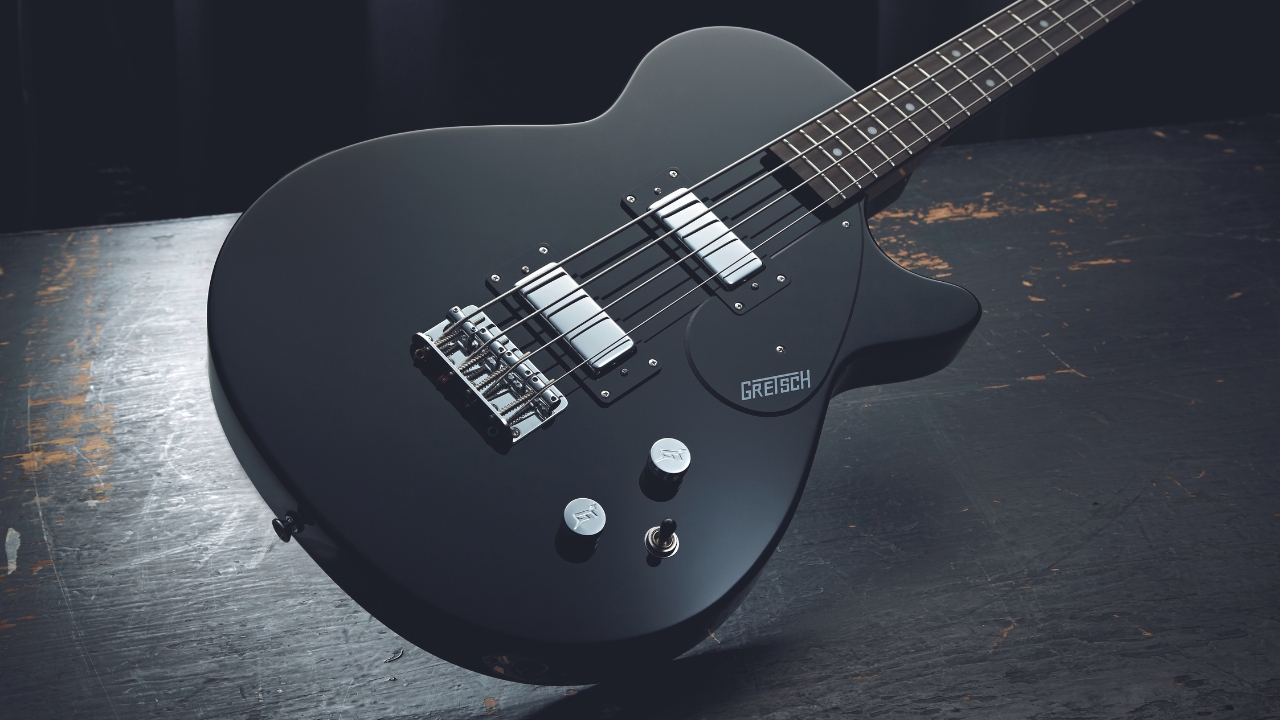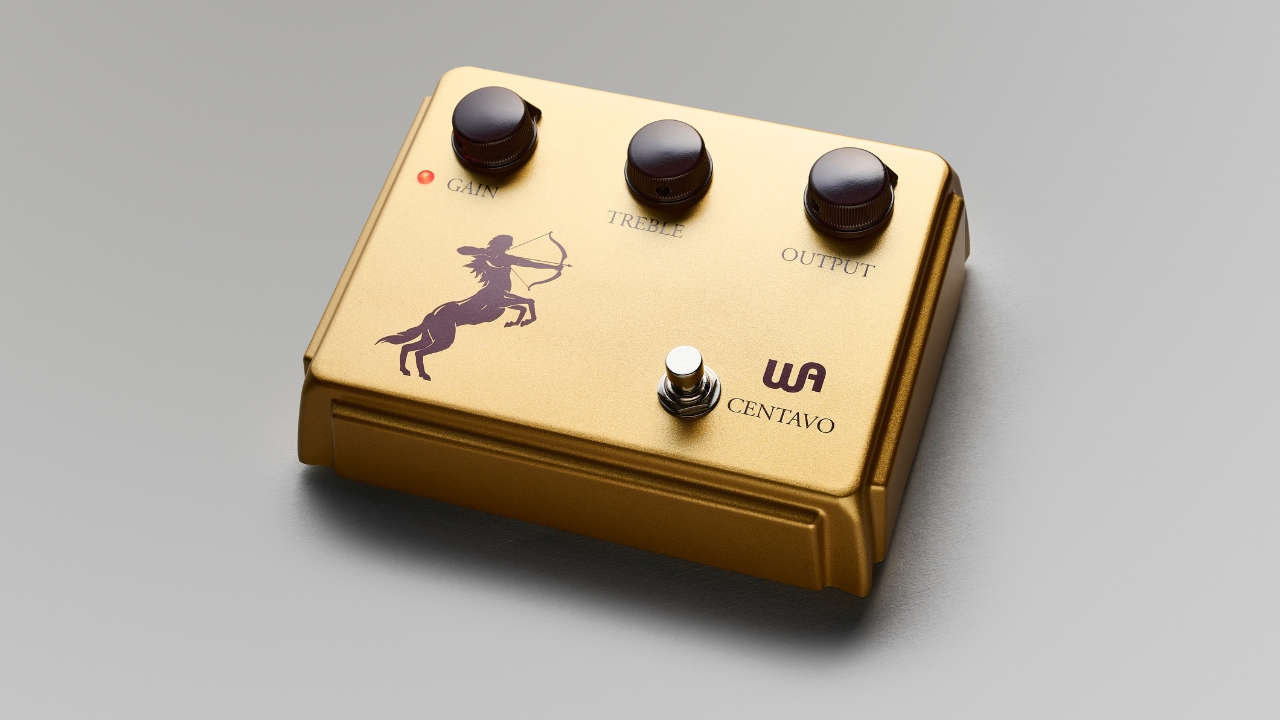Best 3/4 acoustic guitars 2025: Top short-scale options from Taylor, Martin and more
Here are the best short-scale acoustic options that don’t compromise on tone, build quality or performance
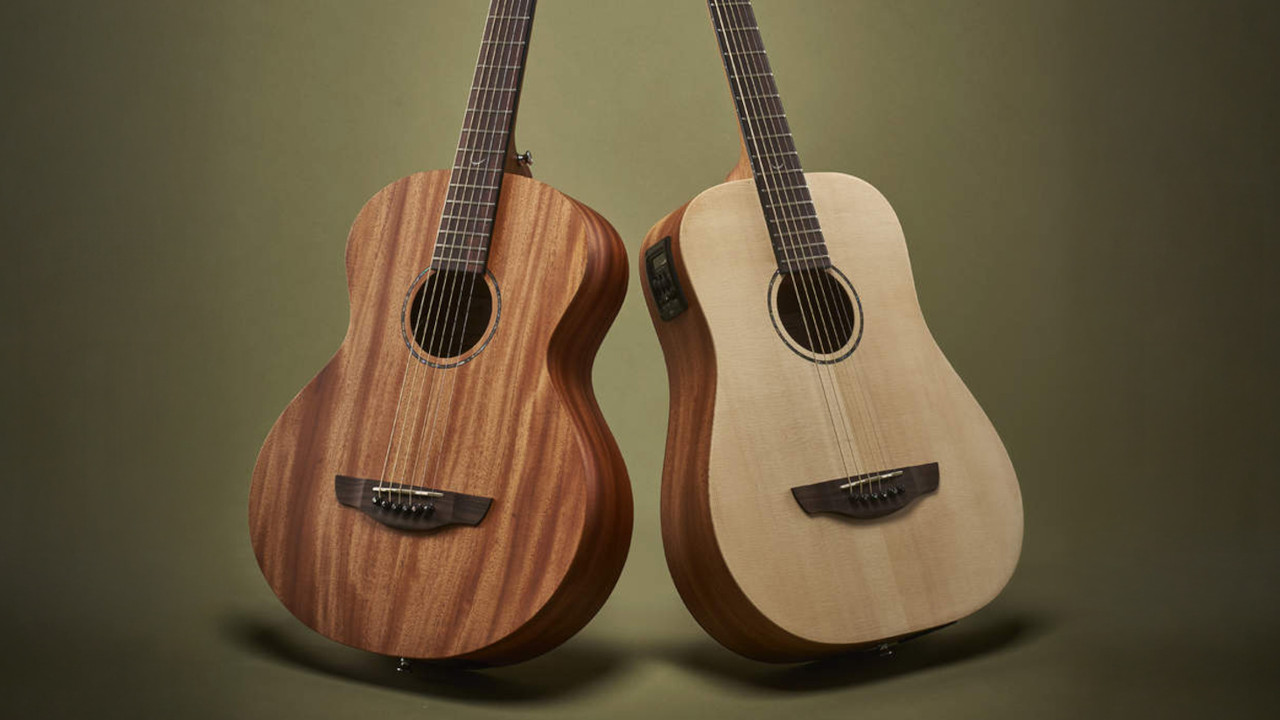
Once upon a time, 3/4-size acoustic guitars were nothing but glorified children’s toys, however, that is no longer the case. Savvy manufacturers recognized the demand for high-quality acoustic instruments suited to smaller players and traveling musicians, creating a market segment that has since exploded. So, if this is you, you're in luck, as we've hand-selected the very best 3/4-size acoustic guitars available right now.
Nowadays, there are many high-end 3/4 acoustic guitars made of solid tonewoods with a depth of sound that makes a mockery of the idea that bigger is better. Typically, these acoustics are 37 inches or shorter, making them significantly smaller than a typical full-size dreadnought guitar, for example, but their tones would have you thinking otherwise.
On this list, you’ll find my picks for the best 3/4-size acoustic guitars, with options suited for everyone from beginners to experts, with my top pick overall going to the Taylor GS Mini-e Rosewood – a well-priced and reliable acoustic that carries a bright, full sound.
So whether you’re looking for a scaled-down guitar as a first six-string for you or your child, a great travel acoustic, or a more comfortable option for a smaller player, I've got you covered.
If you have any further questions about 3/4 acoustic guitars, I've also included a handy FAQ section at the bottom of this page.
Quick list

The goal for any small acoustic guitar should be to sound bigger than its size – the Taylor GS Mini-e Rosewood achieves this with aplomb. At just a touch over 36” long, you’d be forgiven for thinking that it would sound quite boxy, however the shrunken-down ‘Grand Symphony’ body design is wildly resonant for a guitar of this size.

The Nomad Mini Neptune punches well above its price point for spec, with solid mahogany top, back, and sides – something you don’t often get on guitars at even double this price. Complete with a Fishman Sonicore Pickup and Isys T preamp (Presys 2), it’s rare to see premium electronics on a guitar in this section of the market.
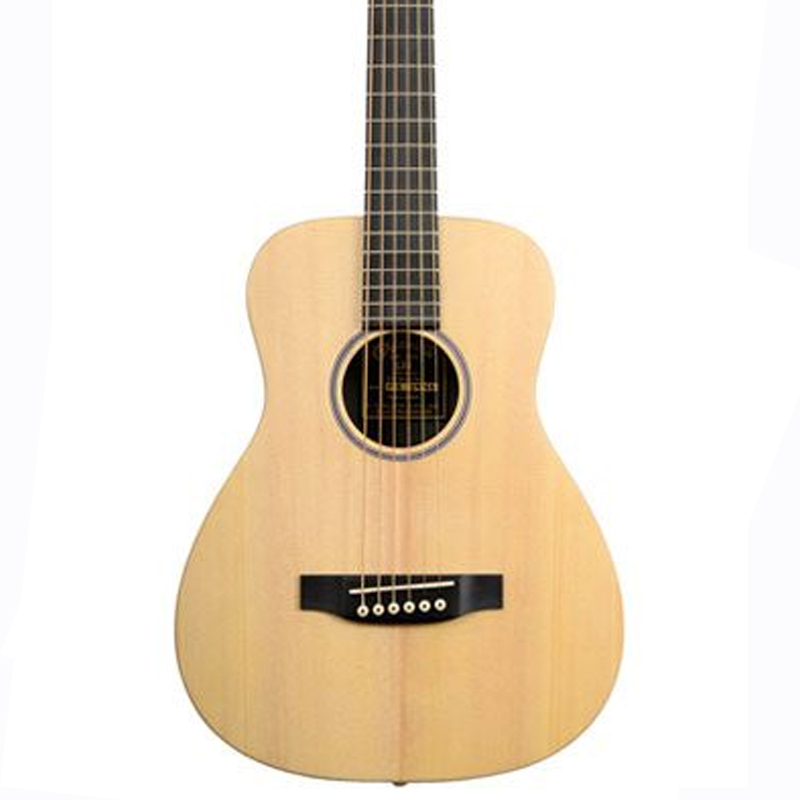
The Little Martin is almost certainly the most recognisable 3/4 guitar on this list. It’s a super instrument out of the box, with greeting tones that you wouldn’t believe came out of a guitar of this size and price, and for around a hundred bucks extra you can add Fishman electronics, which allows you to plug into a PA system or amp. For gigging singer-songwriters, this is a wise addition.
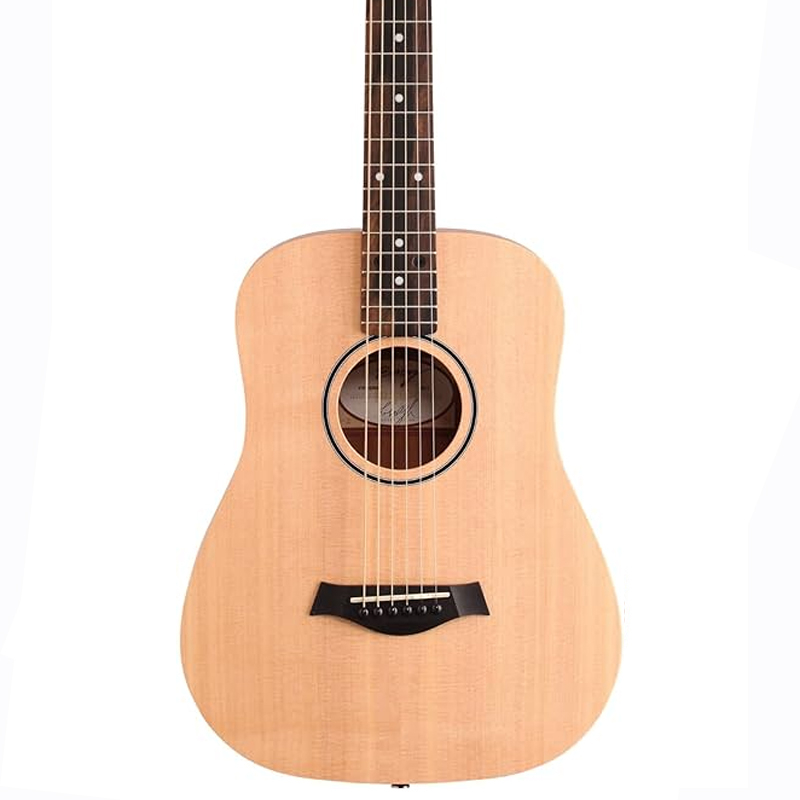
The BT1 was one of the guitars that launched the 3/4 market as a serious proposition for players of any age or experience, rather than purely as student instruments. First released in 1991, the Baby Taylor has not only endured, but it has become revered as an excellent travel companion and a more premium offering for smaller players.
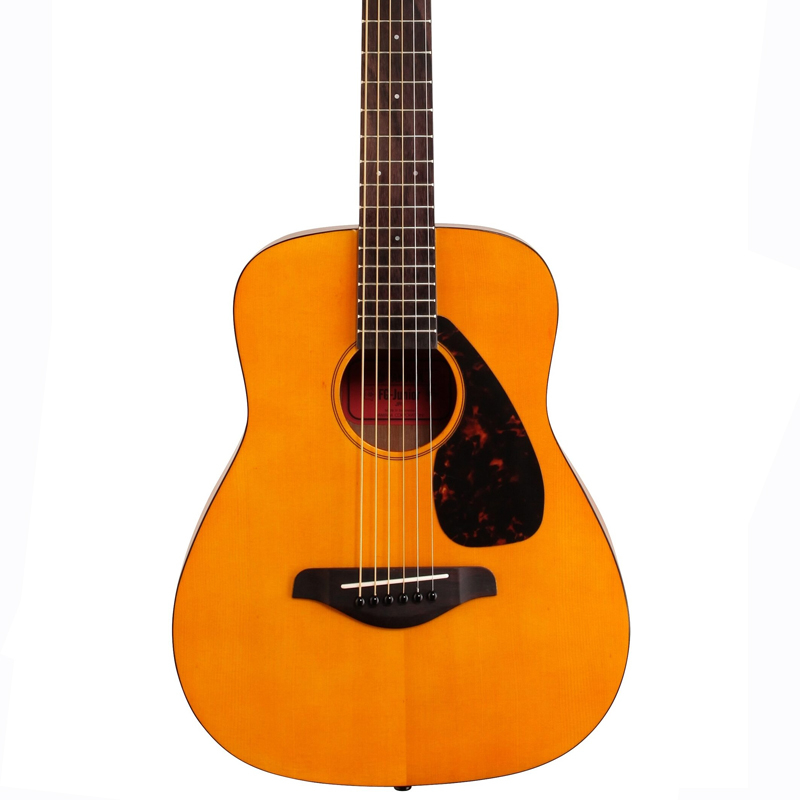
The Yamaha JR1 is the guitar that I wish I’d learned to play on. Whilst the temptation of a $40 guitar that can be with you within 24 hours ordered off the internet is hard to ignore, I can promise that those guitars will sound like some elastic bands wrapped around a tissue box in comparison to the JR1.

Lowden is better known for its high end acoustics, with most of the company's range costing in the thousands; however its collaboration with singer-songwriter and 3/4-playing icon Ed Sheeran has introduced a new, more affordable collection to its catalog. Of them, the W03 is the pick of the range.
Load next 4 products↓
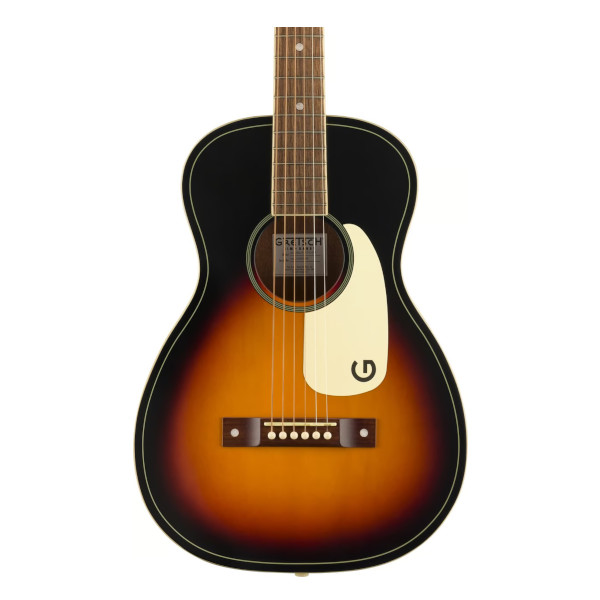
The Jim Dandy Parlor is probably the most fun you can have for under $200 with an acoustic guitar. With a signature country twang, the G9500 is the ultimate campfire guitar, something you throw in the back of your car and bust out for a singalong. In terms of versatility it won’t match up to some of the other acoustics on this list, but it has an undeniable charm, which is equal parts cool and endearing.
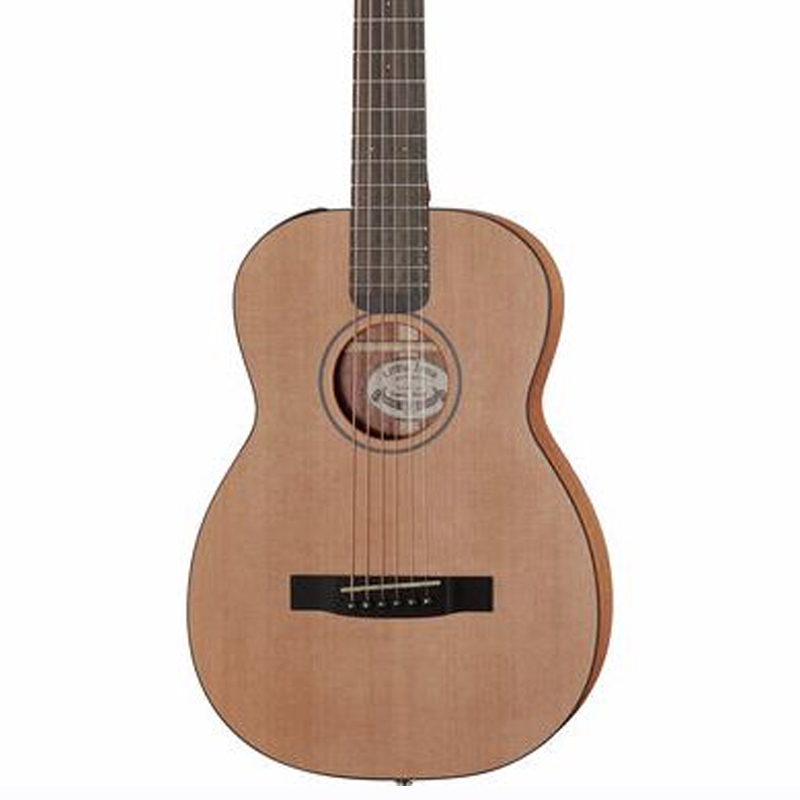
Let’s get it out of the way – this guitar comes apart and folds down. It’s crazy. Acoustic guitars aren’t supposed to do that, but Furch has found a way. It would be very easy to assume this is a gimmick, but in reality it just means that the Little Jane is the pinnacle in acoustic guitars for the person on the move.
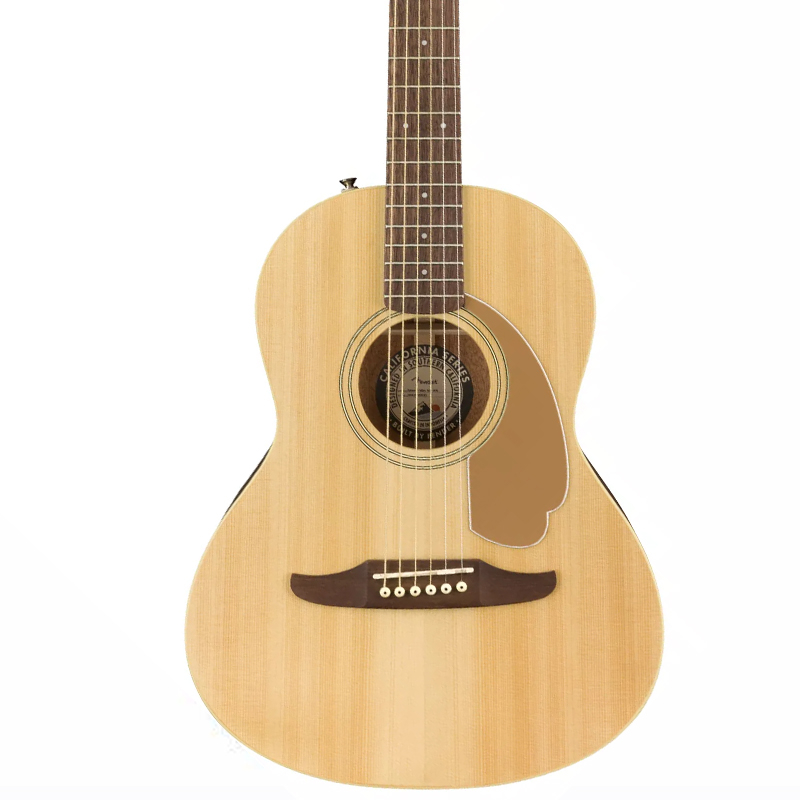
With a headstock that looks like a Stratocaster and a neck that feels pretty close too, the Fender Sonoran Mini would be a great acoustic for electric guitar players who are looking to branch out into acoustic playing. This is particularly enticing given the Sonoran Mini’s price, which matches its tiny size.
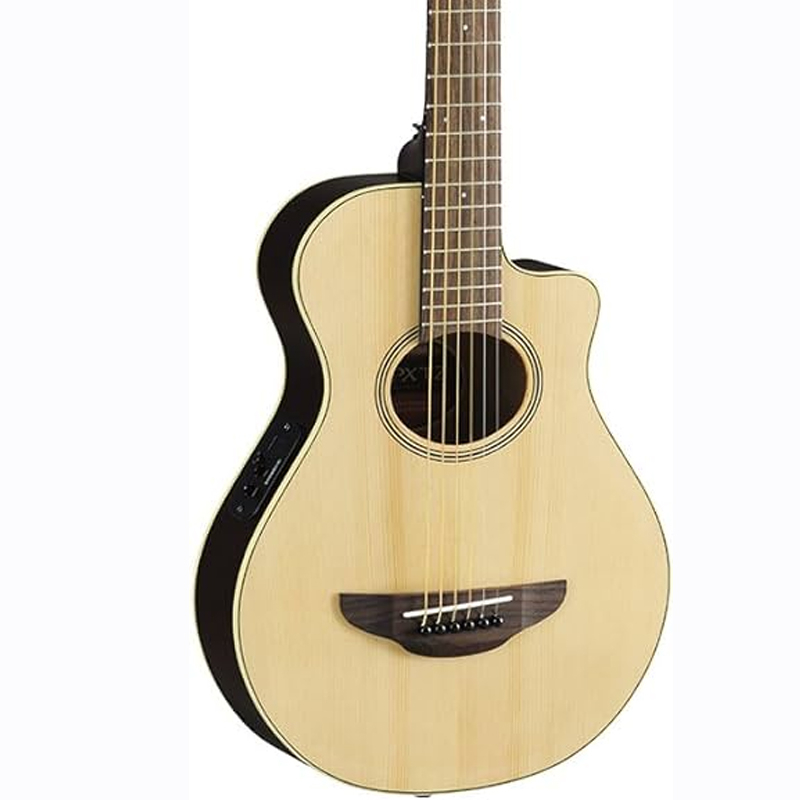
Built on a scaled down version of Yamaha's revered APX Body, every aspect of the APXT2 has been built with travel in mind. With a miniature footprint, but delivering well balanced tones, if you’re a young singer-songwriter (or a songwriter of any age), who is just breaking into playing open-mic nights or small shows, this is an instrument you can happily haul around to gigs.
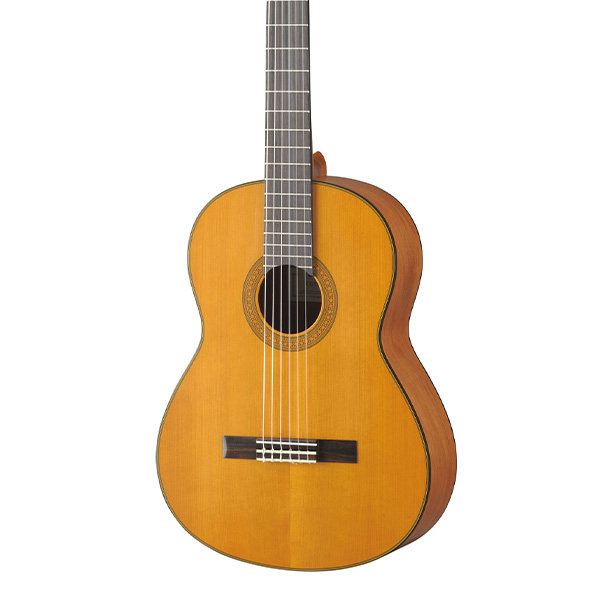
The Yamaha CS40II stands out as the best 3/4-size classical guitar on the market. Its soft nylon strings make it an excellent choice for those learning flamenco or classical guitar. It also serves as a great stepping stone for younger players. The traditional flat radius provides a solid foundation for classical runs, and as expected from Yamaha, the hardware is always reliable.
Best overall
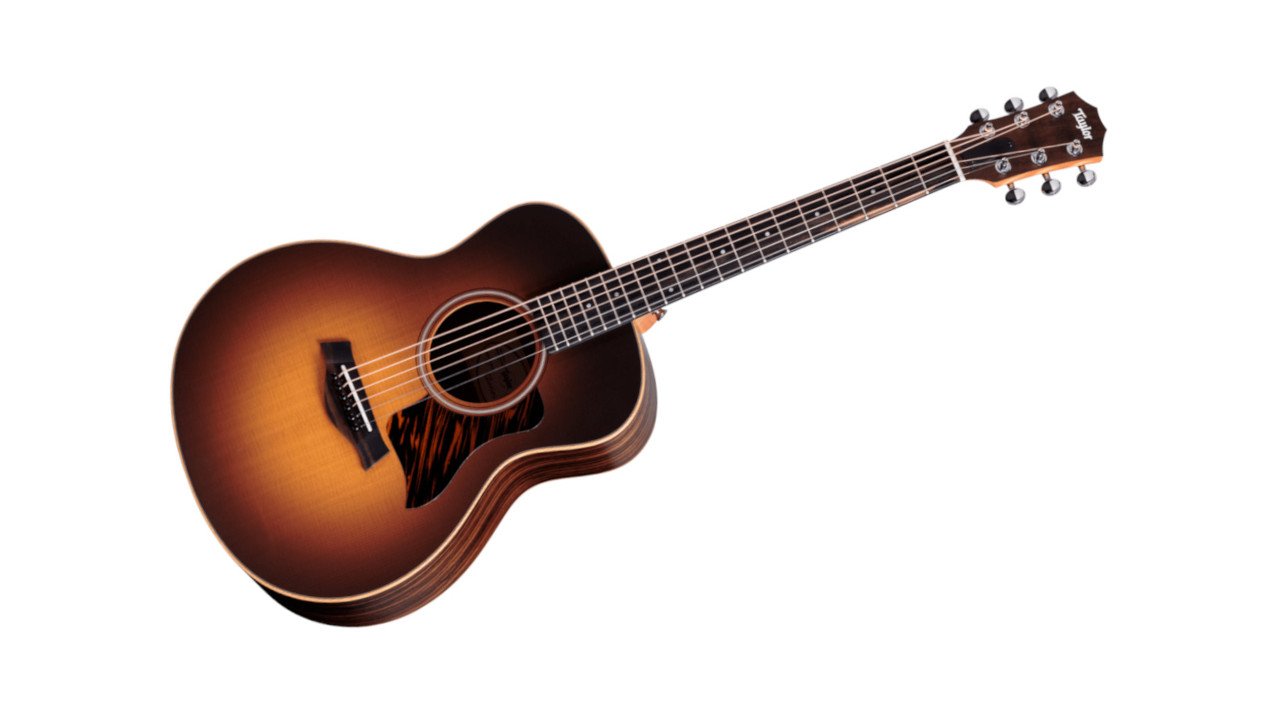
1. Taylor GS Mini-e Rosewood
Our expert review:
Specifications
Reasons to buy
Reasons to avoid
✅ Buy if you want bright, full sound at a great price: The sound of the Taylor GS Mini-e punches above its price point.
❌ Avoid if you have a bit more money to spend: While there’s nothing wrong with this Taylor, you’ll get more if you can expand your budget.
Build quality rating: ★★★★½
Playability rating: ★★★★★
Sounds rating: ★★★★★
Overall: ★★★★★
The goal for any small acoustic guitar should be to sound bigger than its size – the Taylor GS Mini-e Rosewood achieves this with aplomb. At just a touch over 36” long, you’d be forgiven for thinking that it would sound quite boxy, however the shrunken-down ‘Grand Symphony’ body design is wildly resonant for a guitar of this size.
The GS Mini range starts with the sapele standard, with no onboard electronics. If you’re on a tight budget, this is still a reliable guitar, but our pick of the range is the ‘e’ rosewood model, the first without sapele back and sides (upgraded with rosewood) and with a solid spruce top. These tonewoods make a huge difference to the tone, producing a brighter fuller sound that projects really pleasantly.
The ES-B preamp is also a nice addition, so there’s no need to worry about lack of volume – just plug it in! With an integrated 3-band EQ, you can also dial your sound in when electrified. Sometimes these on-board EQ systems can be a bit of a let down on cheaper electro-acoustics, but this is impressively good.
Best all solid
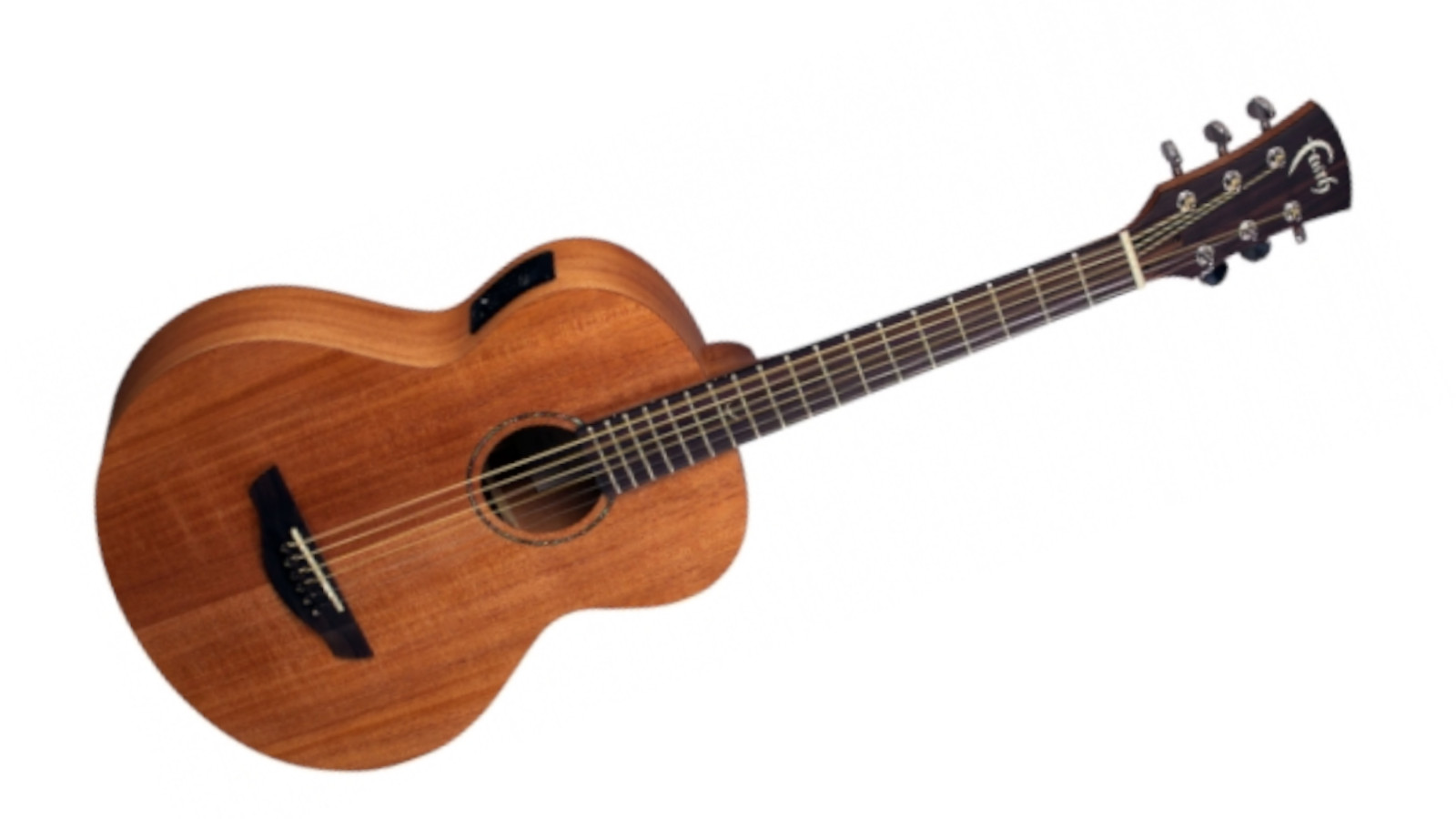
2. Faith Nomad Mini Neptune
Our expert review:
Specifications
Reasons to buy
Reasons to avoid
✅ Buy if you want great build quality: The Mini Neptune has a solid mahogany top, back and sides - amazing for the price.
❌ Avoid if you’re based in the US or Canada: The North American dealer network isn’t great, so you’ll need to buy directly through Faith.
Build quality rating: ★★★★★
Playability rating: ★★★★★
Sounds rating: ★★★★½
Overall: ★★★★★
The Nomad Mini Neptune punches well above its price point for spec, with a solid mahogany top, back, and sides – something you don’t often get on guitars at even double this price.
Complete with a Fishman Sonicore Pickup and Isys T preamp (Presys 2), it’s rare to see premium electronics on a guitar in this section of the market, and the addition really elevates the Nomad Mini above its competition.
Styled after Faith’s ‘Neptune’ body shape – a baby jumbo-inspired design – the body is suitably shrunk without feeling like a ukulele as some 3/4 guitars do, which will suit players looking for something suitable for traveling but don’t want to dwarf their instrument.
Whilst the temptation may be to go for a bigger-name brand, Faith has knocked it out of the park with the Nomad Mini Neptune, so it’s definitely worth considering – though US and Canadian buyers will likely need to buy through Faith directly as its North American dealer network leaves a lot to be desired.
Best from Martin
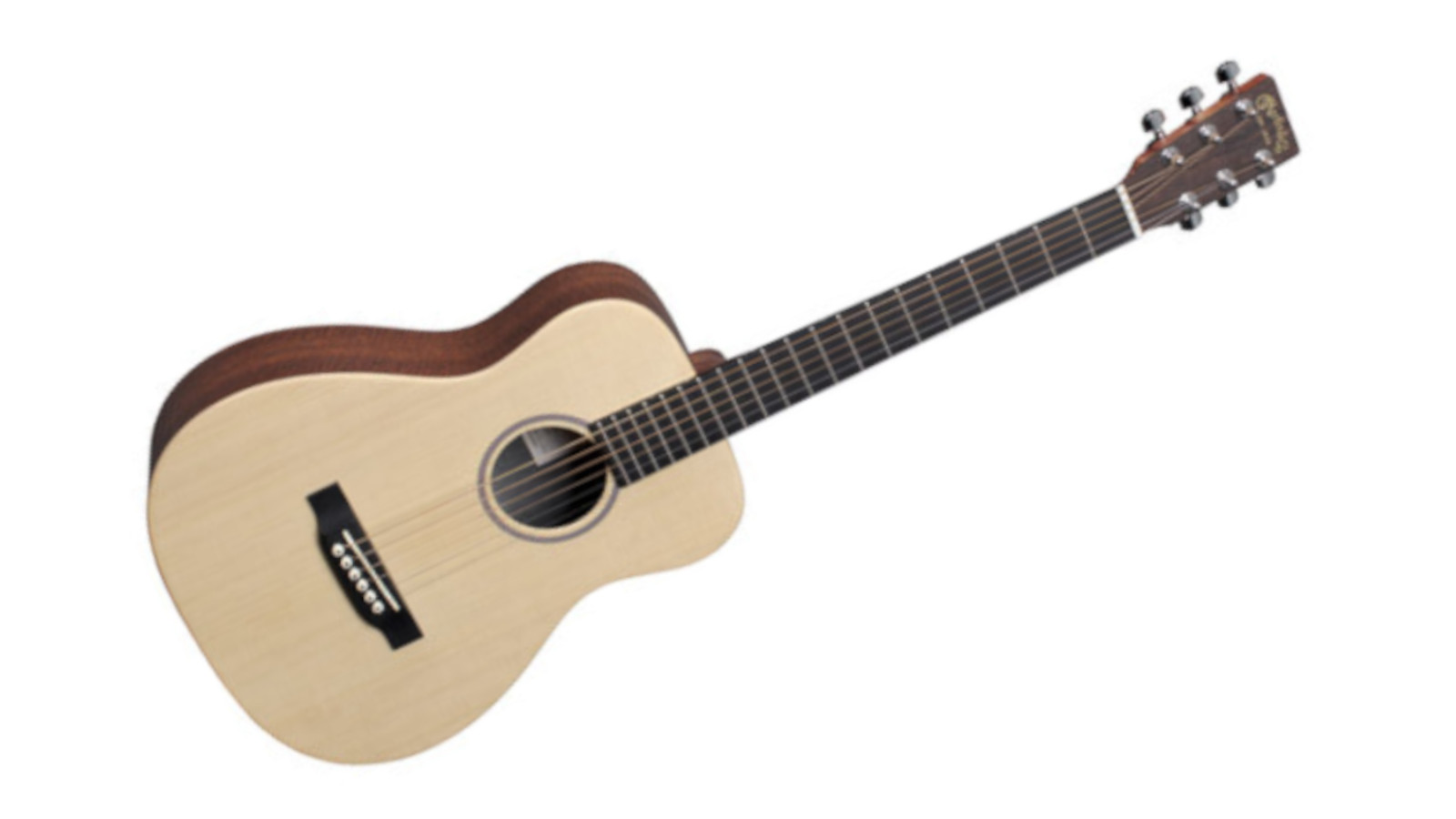
3. Martin LX1 Little Martin
Our expert review:
Specifications
Reasons to buy
Reasons to avoid
✅ Buy if you want a durable acoustic that’ll last: The Little Martin is a great travel companion and it’s built to last a long time.
❌ Avoid if you’re not a fan of laminate material: The laminate used throughout the guitar can feel a little cheap.
Build quality rating: ★★★★½
Playability rating: ★★★★½
Sounds rating: ★★★★½
Overall: ★★★★½
Maybe the most famous of the miniature acoustic guitars, the Little Martin is almost certainly the most recognisable 3/4 guitar on this list. It’s a super instrument out of the box, with greeting tones that you wouldn’t believe came out of a guitar of this size and price, and for around a hundred bucks extra you can add Fishman electronics, which allows you to plug into a PA system or amp. For gigging singer-songwriters, this is a wise addition.
For me though, the best use of this guitar is as a travel companion. It’s built to last, with the use of Richlite on the fretboard, which will offer durability throughout the life of this instrument, even when thrown into the back of a car.
The only real downside to this instrument is the excessive use of laminate material for back, sides and neck. This isn’t really surprising at this price point – in fact, it’ll be a big factor as to why the LX1 is so cheap – but rivals can boast hardwood use throughout, which makes a notable difference to resonance and bottom end.
Best slim neck
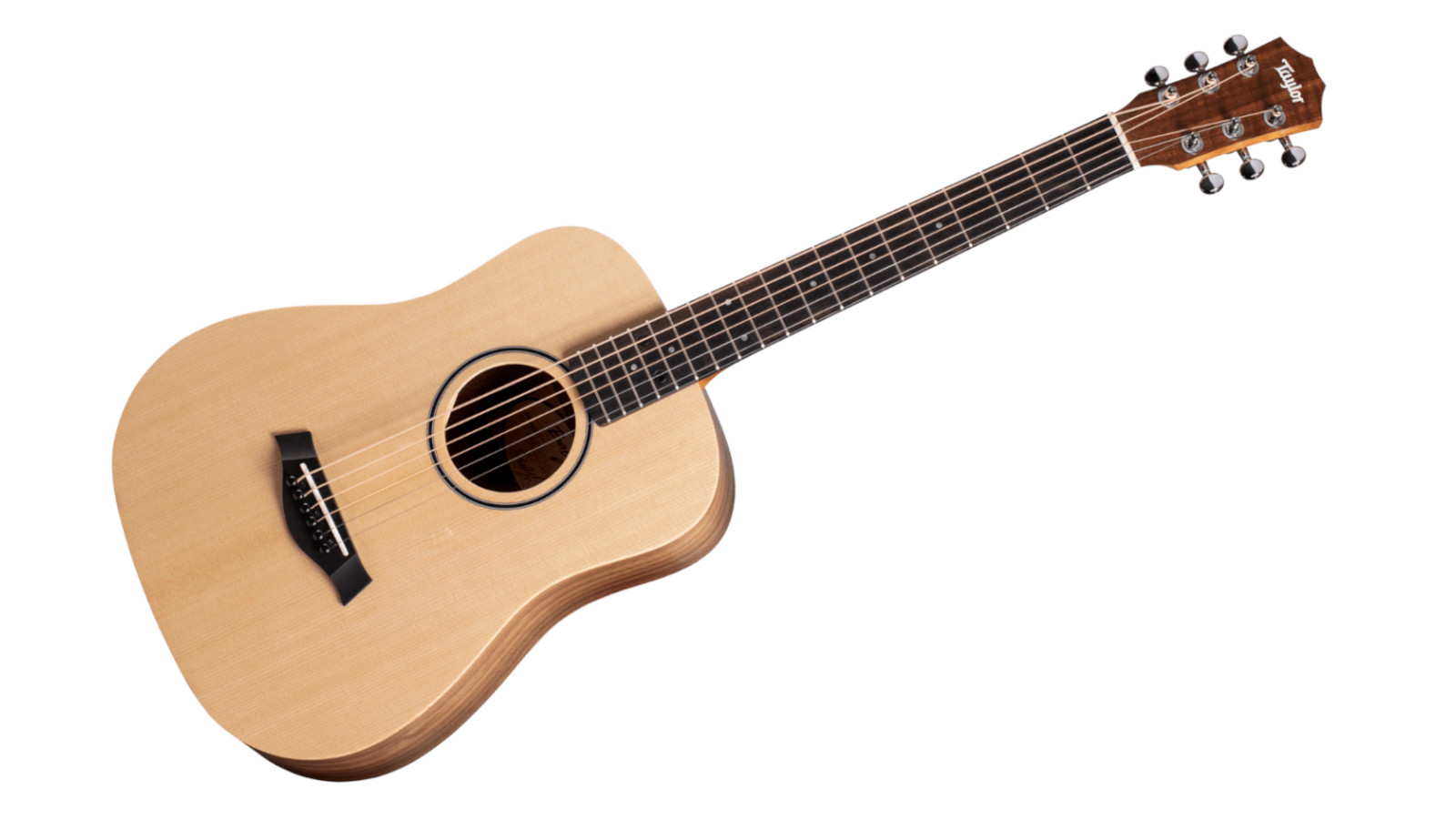
4. Taylor Baby Taylor BT1
Our expert review:
Specifications
Reasons to buy
Reasons to avoid
✅ Buy if you want a very affordable Taylor: The Baby Taylor BT1 is great for the price - and easy to pick up and play.
❌ Avoid if you’ want something more premium: The screw-on neck is a bit of a letdown, but for the price you're still getting a nice model.
Build quality rating: ★★★½
Playability rating: ★★★★½
Sounds rating: ★★★★½
Overall: ★★★★½
The BT1 was one of the guitars that launched the 3/4 market as a serious proposition for players of any age or experience, rather than purely as student instruments. First released in 1991, the Baby Taylor has not only endured, but it has become revered as an excellent travel companion and a more premium offering for smaller players.
As the cheapest instrument in the Taylor catalog, the company has had to keep the costs down where possible, and this is most visible in the screw-on neck. You wouldn’t necessarily notice unless you go looking for the screws (at the bottom of the neck) but they let down the appearance and the overall feeling of quality just a little bit.
The highlight of the BT1 is its superbly smooth, slim neck, which makes it a dream to play even for people with the smallest hands. This is only improved with the guitar coming from the factory with a Nubone nut and premium D’Addario XS strings.
For first-time players, it should be right among your top considerations, as it is a brilliant guitar to learn to play on. And if you’re looking to entice your child into playing guitar, Taylor also offers the BT series in a Taylor Swift signature model, that may be worth considering for ‘Swifties’ out there.
Best for kids
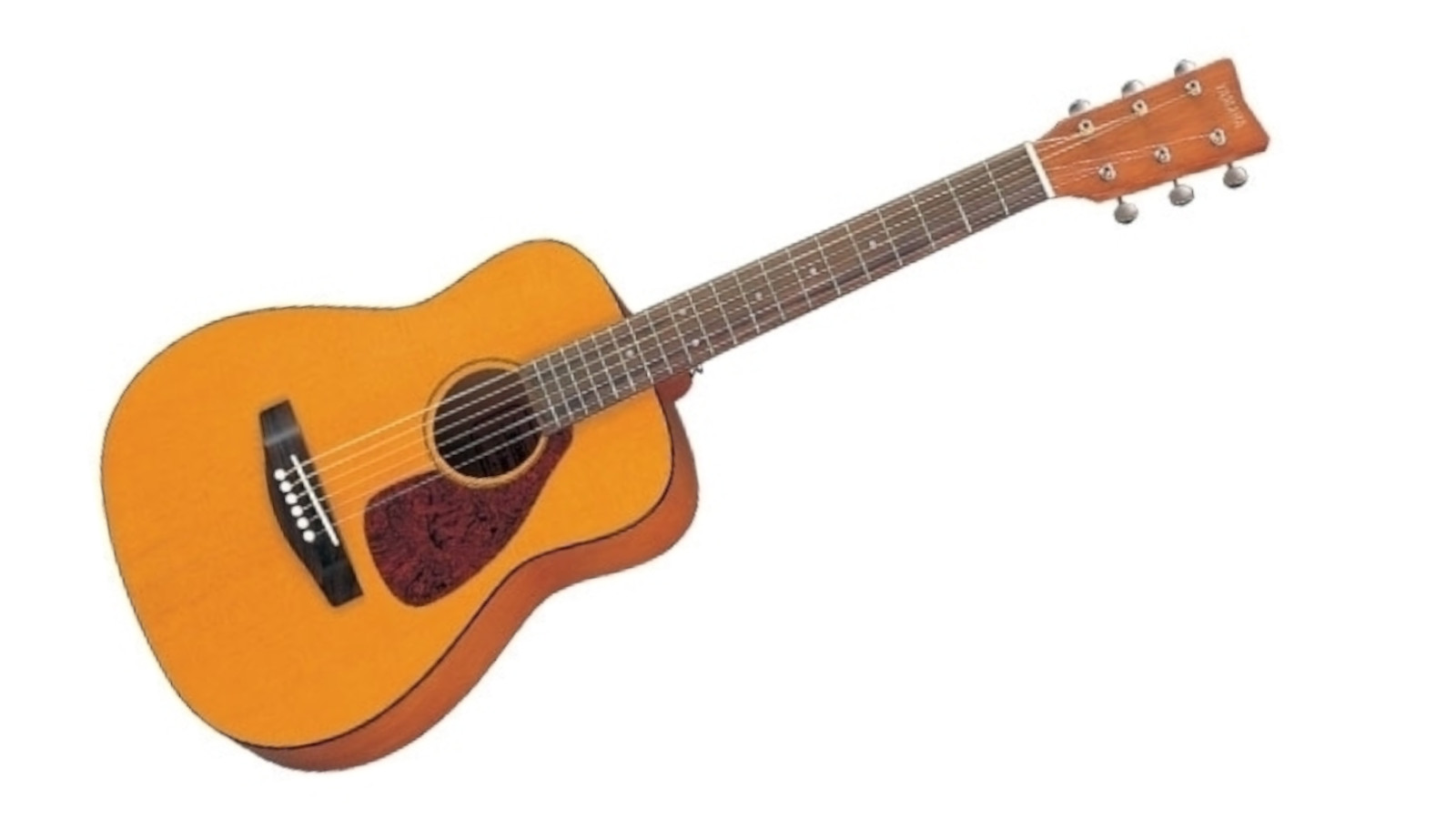
5. Yamaha JR1
Our expert review:
Specifications
Reasons to buy
Reasons to avoid
✅ Buy if you want an acoustic for a younger member of the family: The Yamaha JR1 has a scale length of 21 1/4”, so it's ideal for smaller hands.
❌ Avoid if you’re in your teens or older: Due to its size, the Yamaha JR1 is definitely geared towards the younger end of the market, so if you're older, look elsewhere
Build quality rating: ★★★★
Playability rating: ★★★★½
Sounds rating: ★★★★
Overall: ★★★★
The Yamaha JR1 is the guitar that I wish I’d learned to play on. While the temptation of a $40 guitar that can be with you within 24 hours ordered off the internet is hard to ignore, I can promise that those guitars will sound like some elastic bands wrapped around a tissue box in comparison to the JR1.
Small but mighty, the JR1 produces a surprisingly bright sound, in no small part due to its spruce top, but the real standout feature is its playability, with a lovely smooth neck that doesn’t put up any fight for young hands.
Learning to play on an instrument like this is a joy and will foster a great relationship with guitars forevermore. The first guitar your child learns to play on is arguably the most important they will ever own.
Consider making it a JR1. It is worth mentioning that at a scale length of just 21 1/4”, this really is a junior guitar, so smaller adults looking to learn are advised to look elsewhere.
Best for comfort

6. Sheeran by Lowden W03
Our expert review:
Specifications
Reasons to buy
Reasons to avoid
✅ Buy if you want to play in complete comfort: The W03 feels like a premium product and it's very comfortable to play thanks in part to the beveled edge on the body.
❌ Avoid if you're not a fan of big-name signature guitars: Ed Sheeran has his name of this, and it's a great option, but maybe steer clear if signature instruments aren't your jam.
Build quality rating: ★★★★
Playability rating: ★★★★½
Sounds rating: ★★★★
Overall: ★★★★
Lowden is better known for its high end acoustics, with most of the company's range costing in the thousands; however its collaboration with singer-songwriter and 3/4-playing icon Ed Sheeran has introduced a new, more affordable collection to its catalog. For me, the W03 is the pick of the range.
Featuring touches like a beveled edge on the body – a feature that has trickled down from Lowden's super high-end instruments – the W03 really feels like a premium product that is extremely comfortable to play, for both your hands and body. And the premium features don’t stop there, the LR Baggs EAS VTC electronics makes this a really excellent live instrument, which can be plugged in to get great gigging tones.
Partnerships like the one between Lowden and Sheeran have the risk of feeling contrived, but this small acoustic is a real delight and should be considered against the biggest brands… even if Ed Sheeran isn’t your cup of tea.
Best for blues
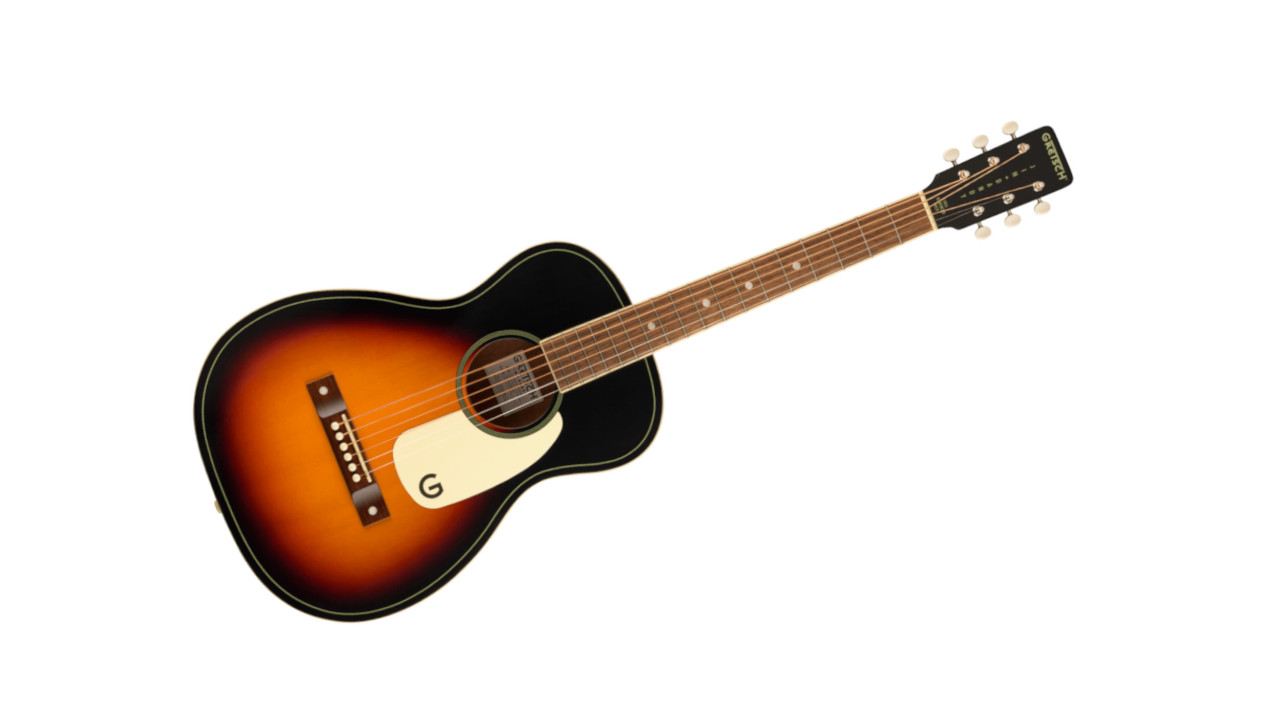
7. Gretsch Jim Dandy Parlor
Our expert review:
Specifications
Reasons to buy
Reasons to avoid
✅ Buy if you want a well-priced pick up and play acoustic: The Gretsch Jim Dandy Parlor may now offer the most refined sound, but it's great for party singalongs.
❌ Avoid if you want warm tones and top of the range build quality: The build could be better and it's not ideal in the studio.
Build quality rating: ★★★½
Playability rating: ★★★★
Sounds rating: ★★★½
Overall: ★★★★
The Gretsch Jim Dandy Parlor is probably the most fun you can have for under $200 with an acoustic guitar. With a signature country twang, the Jim Dandy Parlor is the ultimate campfire guitar, something you throw in the back of your car and bust out for a singalong. In terms of versatility, it won’t match up to some of the other acoustics on this list, but it has an undeniable charm, which is equal parts cool and endearing.
The tone is fat at the bottom with a bit of honky midrange, topped with a really bright upper that borders on having the sound of a resonator.
It’s surprisingly loud too, which makes it all the better for strumming big chords out on. With a classic Parlor design, the neck joins the body at the 12th fret, helping to contribute to its meager 35” total length, and contributes to its signature sound. However, that does mean the top six frets are pretty difficult to access.
Knowing the Jim Dandy’s limitations ahead of buying is essential, but if you lean into what it does best – being fun to play, bashing out some chords with your pals – it’s close to a must-have instrument. If your collection is stagnating and you want to inject some life without spending a whole lot of money, look no further.
Best for travel
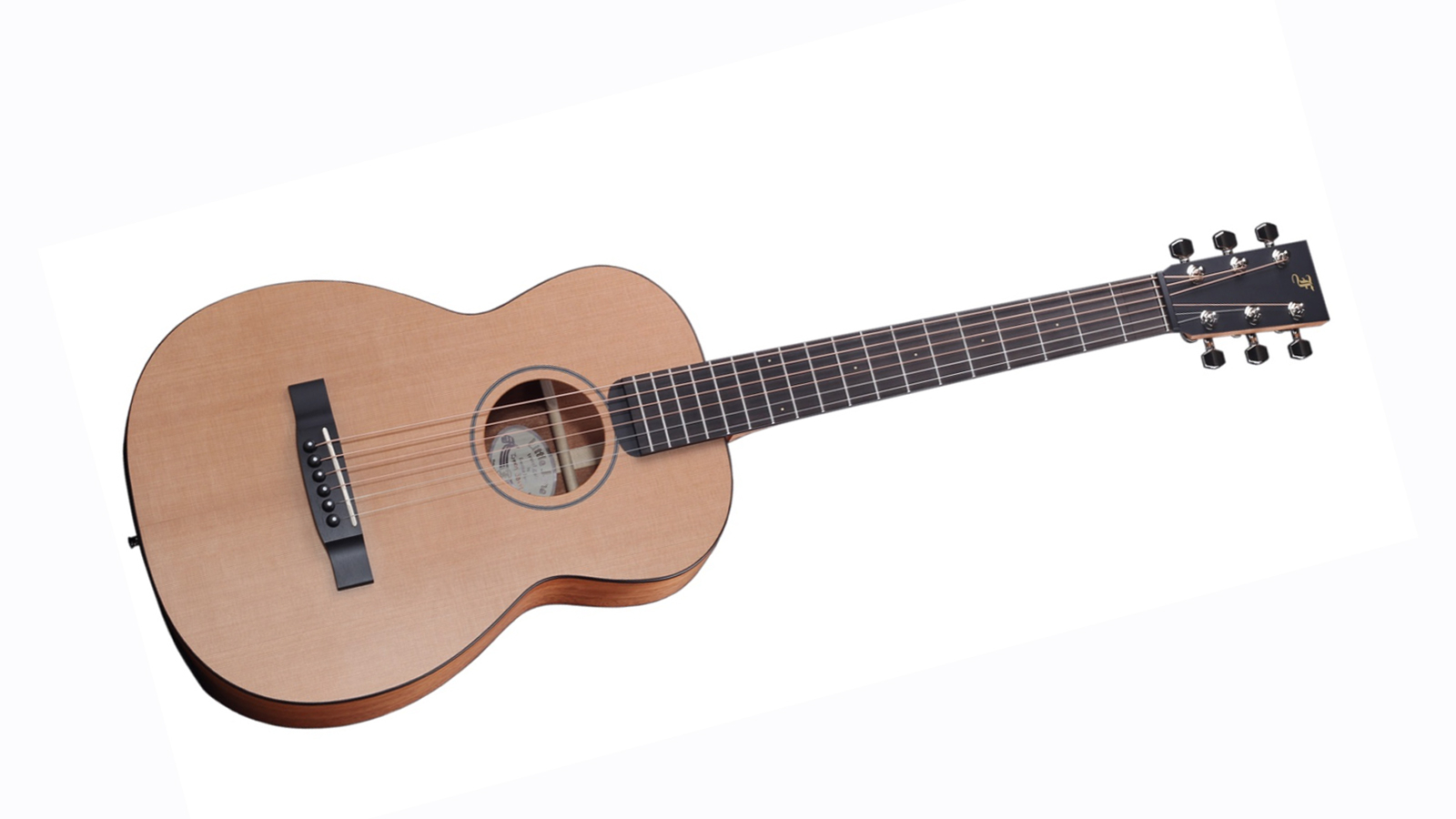
8. Furch LJ-10 ‘Little Jane’
Our expert review:
Specifications
Reasons to buy
Reasons to avoid
✅ Buy if you want a foldable, travel-friendly acoustic: Yes, the Furch LJ-10 ‘Little Jane’ folds up making ideal for jams on the road.
❌ Avoid if you want something to play straight out of the case: The foldable natue of the guitar is neat, but getting everything set up can be a bit of a fiddle.
Build quality rating: ★★★½
Playability rating: ★★★★
Sounds rating: ★★★½
Overall: ★★★★
Let’s get it out of the way – this guitar comes apart and folds down. It’s crazy. Acoustic guitars aren’t supposed to do that, but Furch has found a way. It would be very easy to assume this is a gimmick, but in reality it just means that the Little Jane is the pinnacle in acoustic guitars for the person on the move.
Coming in at over $1000, you’d be forgiven for thinking the vast majority of the cost is being spent on the innovative ‘dismantling’ feature, however the LJ10 is made with solid woods throughout and equipped with locking tuners, premium features that make this quirky instrument play impressively well. In fact, even when considering that it actually comes apart, the most surprising thing about the LJ-10 is just how good it sounds.
A warm low end, with a full midrange and a sensational bright top – which boggles the mind considering a worry with any instrument that comes apart is that it may/should lack resonance. Somehow, the LJ-10 has absolutely bags of it.
If musical inspiration takes you, the last thing you’re going to want to do is have to build your guitar before strumming out your ideas, so for some, just going for a more conventional small-body traveler guitar might be better; however for those with patience, the assembly/disassembly is relatively easy when you get the hang of it and it really takes compact traveling with an acoustic to a new level.
Best from Fender
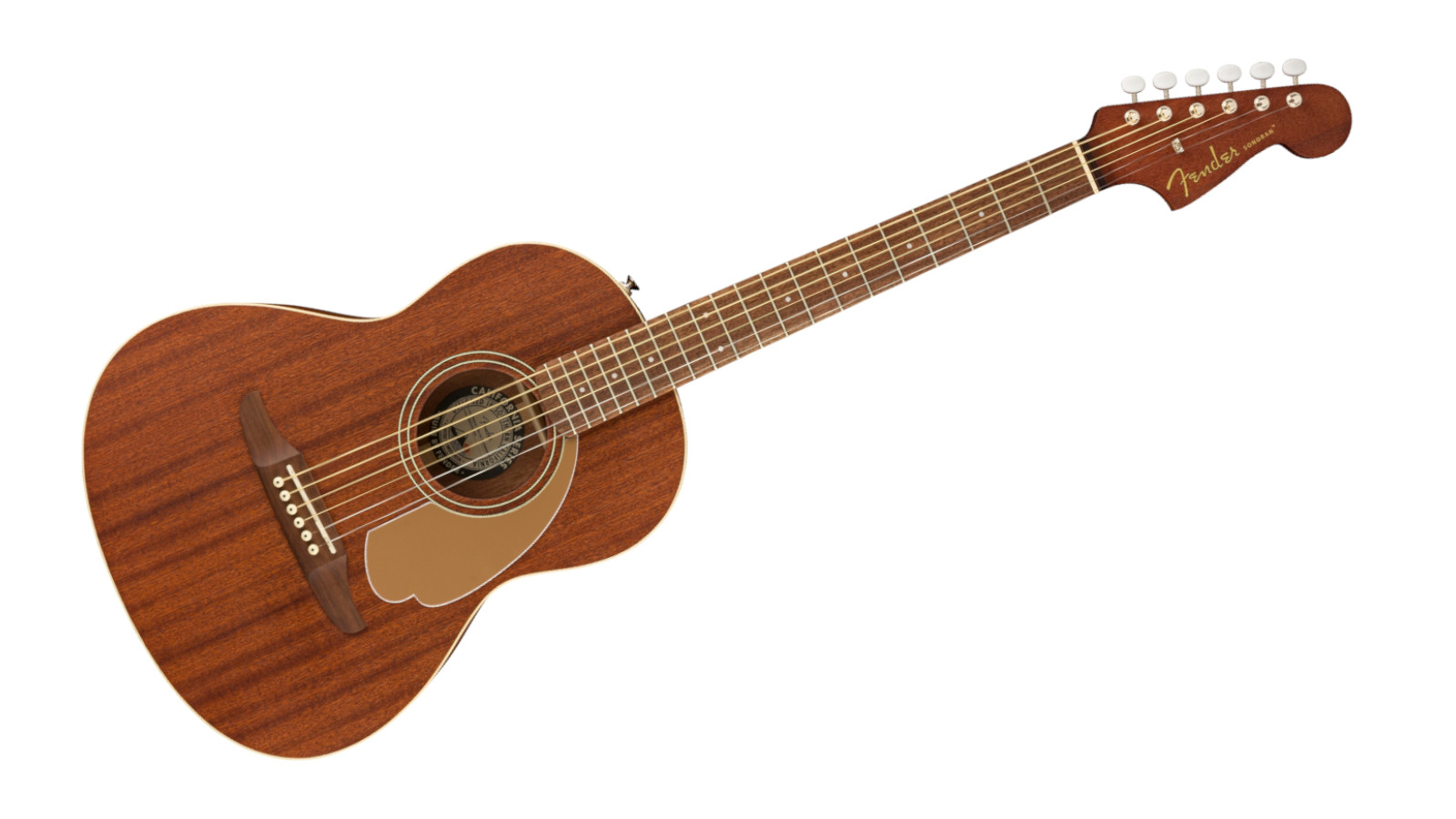
9. Fender Sonoran Mini
Our expert review:
Specifications
Reasons to buy
Reasons to avoid
✅ Buy if you want an affordable Fender: This is a nice acoustic for those making the jump from electric - and it's a great price for a Fender.
❌ Avoid if you're after premium sound quality: I found that the Fender Sonoran Mini had an unconventional tone, making it something of an acquired taste.
Build quality rating: ★★★★
Playability rating: ★★★★
Sounds rating: ★★★½
Overall: ★★★★
With a headstock that looks like a Stratocaster and a neck that feels pretty close, the Fender Sonoran Mini would be a great acoustic for electric guitar players who want to branch out into acoustic playing. This is particularly enticing given the Sonoran Mini’s price, which matches its tiny size.
It has an unconventional but broadly appealing tone that would be great for use in a recording studio to add a different texture to your recordings. However, with that unconventional tone there comes a slight harshness to the top end and the midrange feels a touchy boxy, which can also become a bit wearing after a long playing session.
For the price though, it’s hard to have too many complaints, and some will absolutely love the looks.
It’s the most cost-effective way to have a great-looking Fender guitar at home.
Best beginners
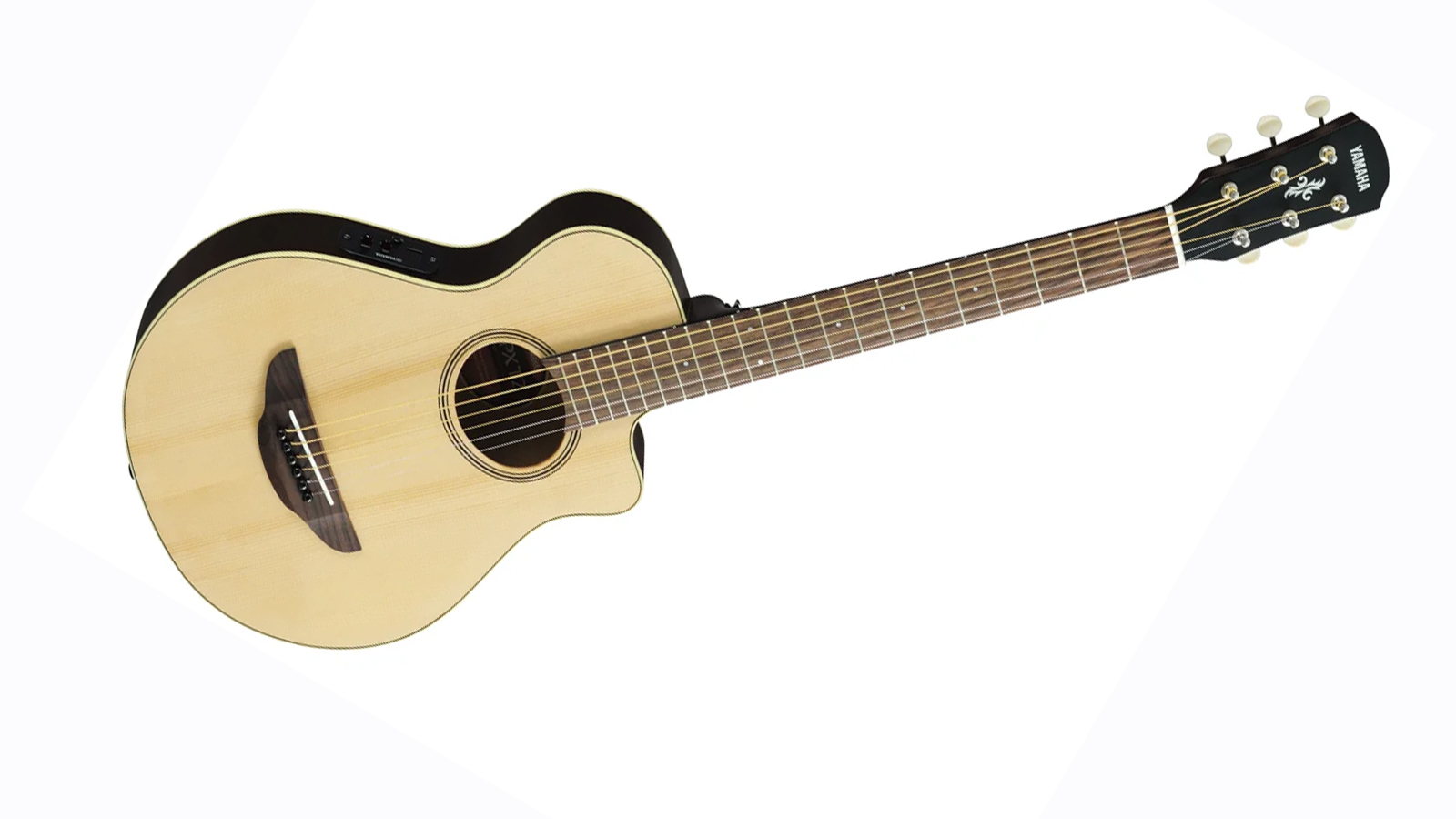
10. Yamaha APXT2 Travel Guitar
Our expert review:
Specifications
Reasons to buy
Reasons to avoid
✅ Buy if you're a singer/songwriter just starting out: This acoustic is robust enough to withstand bumps and scrapes on the road - and comes with a signature gig bag.
❌ Avoid if a top tier preamp system is on your shopping list: The APXT2 has tone controls, volume adjustment and a built-in tuner, but what's here could be better.
Build quality rating: ★★★★½
Playability rating: ★★★★
Sounds rating: ★★★★
Overall: ★★★★
Built on a scaled down version of Yamaha's revered APX Body, every aspect of the APXT2 has been built with travel in mind. With a miniature footprint, but delivering well balanced tones, if you’re a young singer-songwriter (or a songwriter of any age), who is just breaking into playing open-mic nights or small shows, this is an instrument you can happily haul around to gigs on the bus, or if you have to walk any substantial distance – it even comes with a signature gigbag as standard.
The APXT2 features a full size cutaway on the body, making access to the higher frets far easier, which contributes to the neck feeling more usable compared to some 3/4 acoustics where you don’t have access to the top end at all, limiting you largely to chord playing.
Even on its cheaper instruments, you can always feel a certain level of attention to detail with Yamaha and the APXT2 demonstrates that too, particularly in areas such as the spruce top, which makes it bright and articulate.
The System 68 contact pickup and preamp system mean that the APXT2 is well equipped not only for acoustic performances, but amplified shows too, and it features tone controls, volume adjustment and a built-in tuner. Though don’t expect the electronics to set the world alight considering their price.
Best classical
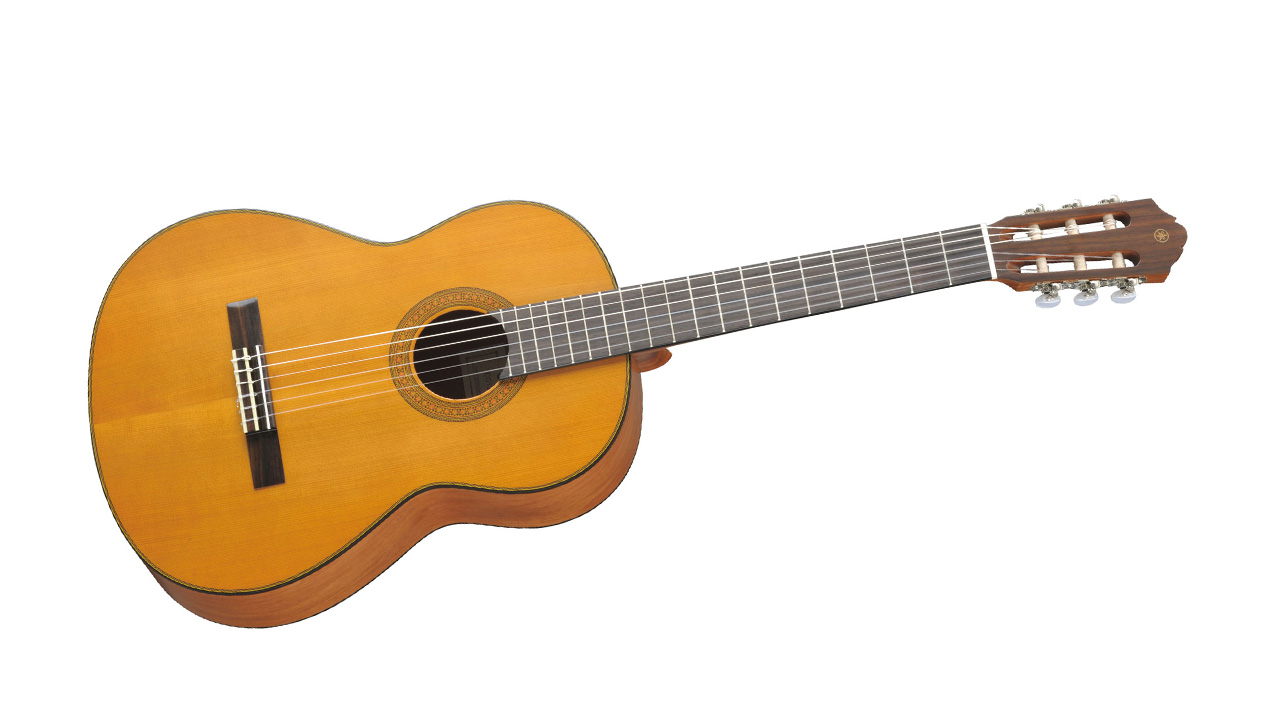
11. Yamaha CS40 II Classical Guitar
Our expert review:
Specifications
Reasons to buy
Reasons to avoid
✅ Buy if you're learning flamenco or classical: The CS40II is durable and great for learning on.
❌ Avoid if you're a more experienced player: This will suit those starting out, but more experienced players should look elsewhere.
Build quality rating: ★★★★
Playability rating: ★★★★
Sounds rating: ★★★★
Overall: ★★★★
Yamaha’s classical guitars are a staple in classrooms worldwide, thanks to the brand’s reputation for quality, durability and affordability. With that in mind, it’s no surprise that the CS40II stands out as the best 3/4-size classical guitar on the market.
Its soft nylon strings make it an excellent choice for those learning flamenco or classical guitar. At the same time, it serves as a great stepping stone for younger players who aren’t quite ready for the harsher feel of steel strings. The traditional flat radius provides a solid foundation for classical runs, and as expected from Yamaha, the hardware is always reliable.
While there isn’t a left-handed version available, the flat radius allows for easy conversion – just take it to a local luthier for modification.
The CS40II may not be the flashiest or most eye-catching guitar out there, but if you’re after a well-built, great-value short-scale classical guitar, it’s hard to beat.
FAQ
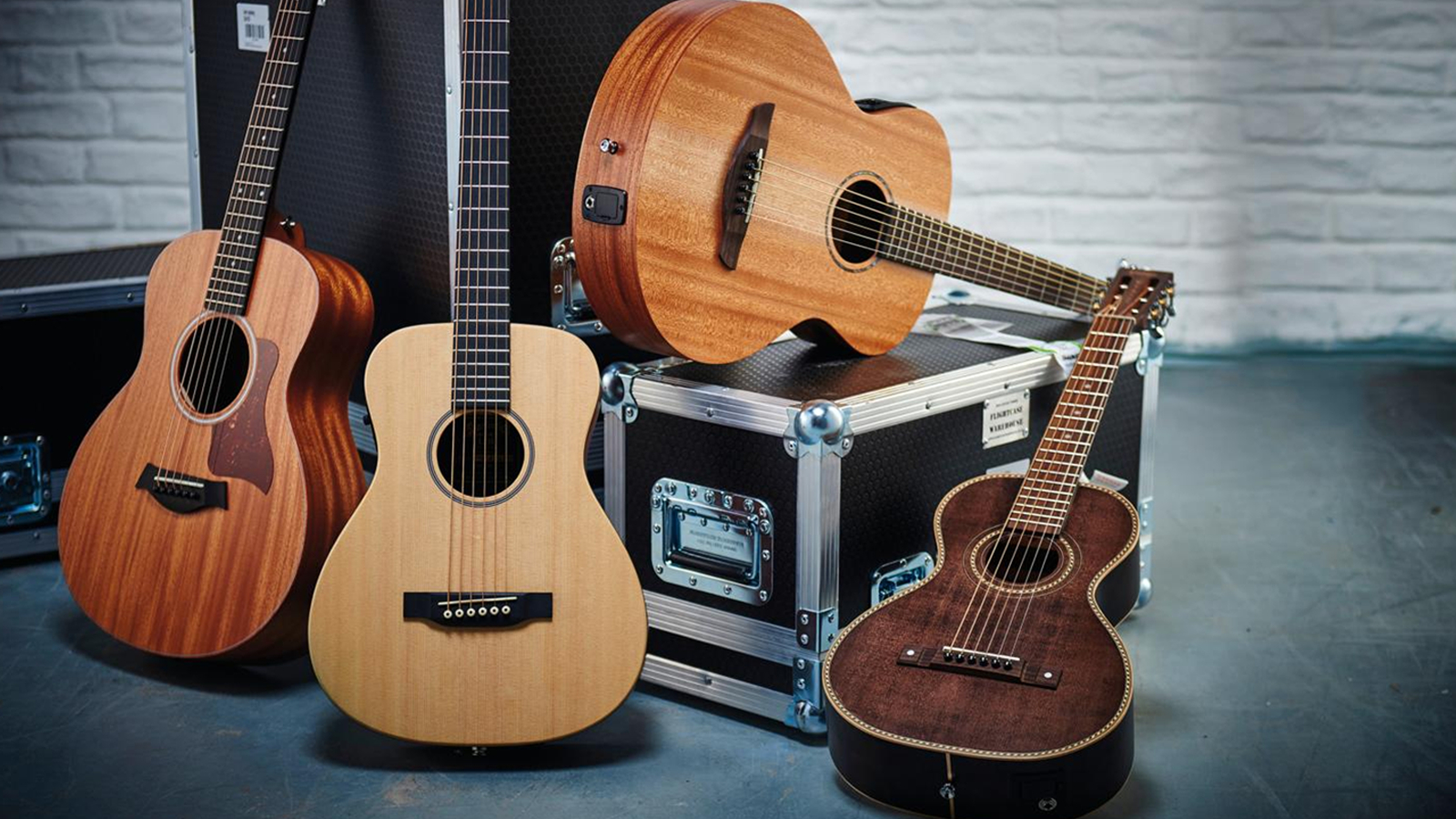
The rise and rise of the 3/4 acoustic
You can trust Guitar Player.
Though not universally beloved by us guitarists, it would be unfair not to attribute the growth of the 3/4 acoustic market to Ed Sheeran. His signature range of shrunken Martin guitars was immensely popular and his more recent move to Lowden guitars has put that brand on the map for non-aficionados too. Whilst Taylor started the trend of quality 3/4 acoustics over 30 years ago, Ed Sheeran only accelerated their popularity in the last 15 years.
What are the benefits of 3/4 acoustics?
Size
One of the biggest benefits of acoustic guitars of this size is that they are so much easier to travel with. With reduced size and weight, these are much more friendly for those players who rely on public transport or have to carry their instruments over great distances.
One key reason that the aforementioned red-headed chart-topper Sheeran became so synonymous with the smaller travel-sized guitar is that he began his career as a busker who needed something more suitable for traveling with, and then continued to use them even after hitting the big time.
Comfortable for beginners
As well as their size making them easier to transport, 3/4 acoustic guitars can be much easier to wield than their giant counterparts, which is why they are perfect for beginners.
But they’re not just for children; perhaps you’re a player who is a little on the smaller side of things and a super-jumbo-bodied acoustic is uncomfortable or even painful to play. It doesn’t matter how good a guitar sounds, if you can’t play it properly, it makes playing unenjoyable. A 3/4-size instrument eradicates this issue and makes the acoustic guitar much more accessible to people with smaller frames or hands.
Great value for money
Finally, there is the price. When it comes to acoustic guitars, less is often less (though not always) and having a smaller instrument means less wood is needed and therefore costs of manufacture aren’t as high. While on smaller acoustics, this can be down to cost-saving by using cheaper materials, this isn’t always the case and you can buy guitars made of the finest materials – for example, Faith’s Nomad Mini series – but for that little bit less than a comparable guitar that is 25 percent bigger.
What are the drawbacks of 3/4 guitars?
Weaker bass response
Bigger isn’t necessarily better, but physics are hard to overcome and the lack of resonant space on 3/4-size acoustic guitars means they inherently struggle to generate the low-end of larger dreadnought or jumbo-shaped guitars.
Often quieter
Low end/bass is also a big part of what we perceive as ‘loudness’, and given that smaller-body acoustics aren’t typically known for their girth in the bottom end of the frequency band, that can make them seem a bit weedy and quiet. This is particularly noticeable in cheaper instruments which may have laminate construction – a more cost-efficient way to build acoustic guitars through thinner veneered layers of wood that are stuck together – where the wood tends not to resonate as well as in higher-end, solid-wood acoustics.
If you are looking to have a room-filling sound, consider purchasing an electro-acoustic version of one of these 3/4 acoustics, or consider adding acoustic guitar pickups to add near-limitless volume to your favourite diminutive acoustic.
It isn’t to say there aren’t tonal benefits to the shrunken acoustic, which has a rapid response and bright sound – brilliant, unique qualities that make 3/4 acoustics appealing as an additional guitar in a collection, rather than just a standalone purchase. Every player should consider getting their hands on a 3/4 acoustic guitar.
How we test
At Guitar Player, our team of writers aren't just music enthusiasts; we're real-life musicians. Our hands-on experience with 3/4-sized acoustic guitars ensures that our reviews and recommendations are backed by practical knowledge and real-world testing.
When it comes to selecting the best 3/4 acoustic guitars, we leave no stone unturned. Meticulously evaluating factors like tonal versatility, sonic character, build quality, and value for money, it's only after rigorous testing in a variety of playing scenarios do we choose products for our guides.
We stand by our selections, ensuring that every set of strings we recommend is one we'd use ourselves.
Meet the experts

Connor is a contributor to Guitar Player, Guitar World & MusicRadar. Having been a guitarist since the age of 10, he's played bass and guitar in bands across the South West of England. He has a background in audio engineering, having worked in some of the UK’s best studios including Rockfield and Invada, and has a passion for recording guitar. He is always keen to discover the greatest gear for capturing tone, be that microphones, audio interfaces or cab simulators.

Ross has been a music lover and guitar player since the age of 8. He has spent the five years since graduating from university working in music retail, selling guitars, amps and more. Ross is particularly interested in electric guitars, pedals and amplifiers and his current rig includes a trusty 2009 American Standard Stratocaster and Vox AC30S1 with a few Walrus Audio and Way Huge pedals in between.
Latest updates
Recent updates
13/03/25: The guide has been updated to include two new products: the Gretsch Jim Dandy Parlor and the Yamaha CS40 II Classical Guitar. All the 3/4 acoustic guitars featured now have "At a glance" boxes added with pros and cons, along with a star-rating score. The FAQ section has also been expanded with more information. A "Meet the experts" section has also been included so you can get to know the faces behind the names.
Read more:
- Get the best of both worlds with the best acoustic-electric guitars
- Spruce up your guitar with the best acoustic guitar strings
- Supercharge your acoustic playing with the best acoustic guitar pedals
- These are the best guitar slides
Get The Pick Newsletter
All the latest guitar news, interviews, lessons, reviews, deals and more, direct to your inbox!
“I felt myself starting to cry.” Eric Clapton’s 'MTV Unplugged' Martin acoustic returns in two guises. But Slowhand’s affinity for the guitar brand began long before that seminal live performance
"I have a Mercury on the guitar now, which makes me very happy.” Brian May’s new signature Gibson SJ-200 features a subtle tribute to the late Queen singer Freddie Mercury
